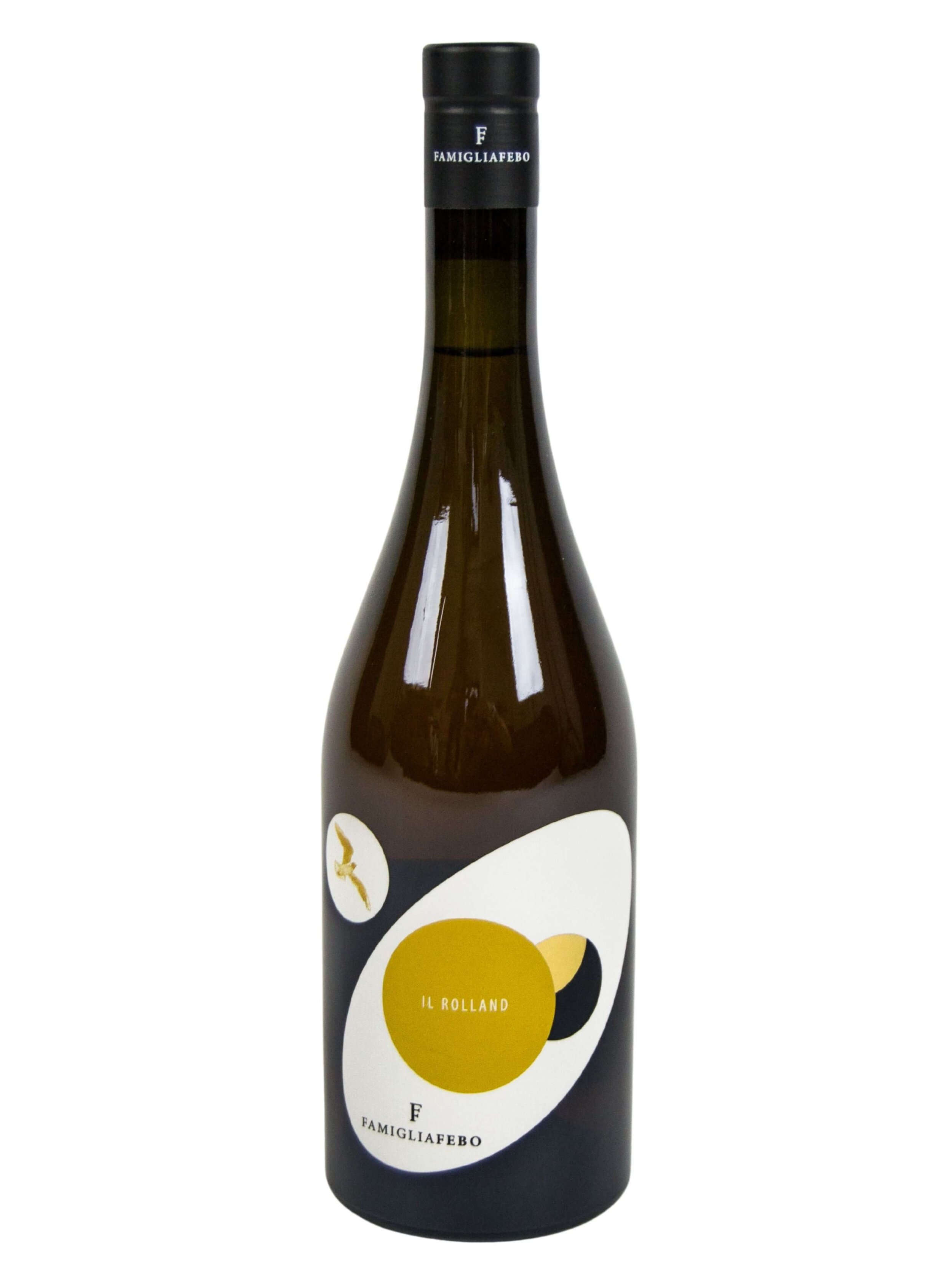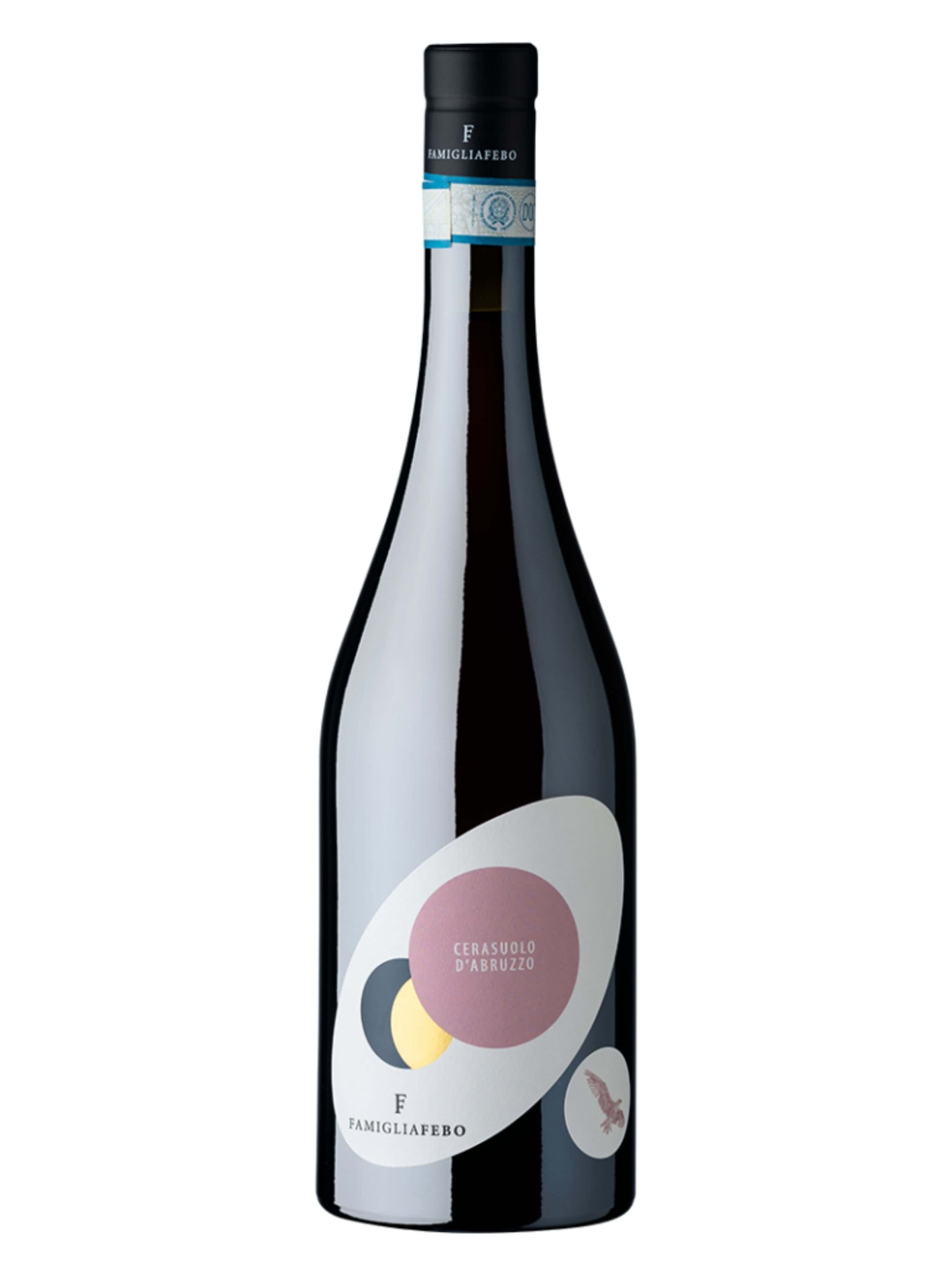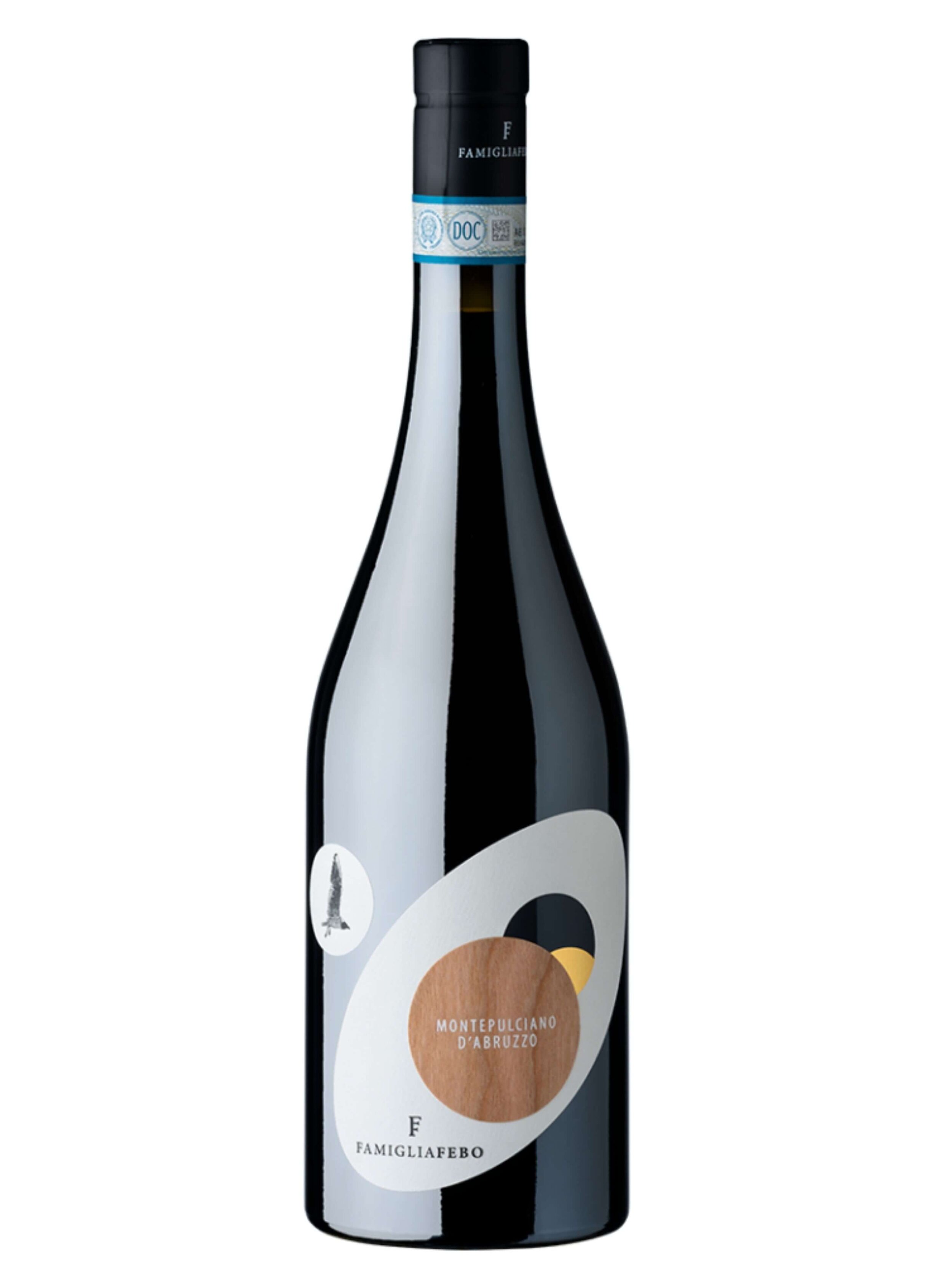This Trebbiano Ain't Got No Curse
Abruzzo is a region of Italy tucked into the Adriatic Sea coastline, rarely visited by American tourists, and as we have explored previously, that is part of its charm. Abruzzo has historically been an important wine region in Italy too, thanks to, more than anything, the micro climates that are created from the mix of mountains, hills, sea and rivers that make up the landscape of this undiscovered part of Italy. The Etruscans caught onto this, who are credited with having put Abruzzo on the Italian wine map in ancient times, which the Romans took advantage of to, especially since Abruzzo is conveniently just east of Rome.
Let’s explore one of the most iconic wine grapes of Abruzzo, which is what Eric Asimov of the New York Times calls one of the “10 Uncommon Grapes Varieties That Make Joyful Wines": trebbiano abruzzese.
Trebbiano abruzzese grapes on the vine in the Febo family vineyards.
The Curse of the Trebbianos
There are many ‘trebbianos’ in the world, such as trebbiano toscano, trebbiano di soave, and trebbiano abruzzese. As Ian D’Agata notes in his book Native Wine Grapes of Italy, “Naming members of the Trebbiano group often involved adding an adjective that referred to their place of origin, the place where they were most abundant, or their color. Thus there are countless different “trebbiano-something” varieties... the trebbianos share some morphologic and behavioral features… but are, for the most part, unrelated.”
Given that the trebbiano grapes share a common name but can be very different grapes producing varying quality of wines, is very confusing, not only to the ordinary wine drinking consumer but even to wine professionals. In fact, there is a sort of curse of the trebbiano that Vero founder, Sheila Donohue, uncovered while she was with Davide Febo in Bologna, Italy recently: they were having lunch at a local osteria, wine bar and eatery, talking with the owner who said that most local Bolognesi will avoid having a Trebbiano Abruzzese wine since they think it is a cheap Trebbiano white wine made from other trebbiano grapes, like trebbiano toscano or trebbiano romagnolo, which are completely different grapes compared to trebbiano abruzzese; instead these trebbiano grapes are considered “workhouse grapes” that are easy to grow and are used to produce high volume, cheap bulk wines. Even Eric Asimov of the New York Times agrees, saying “Most (trebbianos) are common but mundane, but not trebbiano abruzzese, a grape that is lively, richly textured, floral and saline.” As a result, the locals avoid any wine with the trebbiano name, to the chagrin of wine growers like Davide Febo that cultivate and make wine from one of the best Trebbiano group grapes. In fact, Eric continues to mention another complication that the appellation Trebbiano d’Abruzzo (which sounds awfully similar to the name of the grape, trebbiano abruzzese) can be made with the lower quality trebbiano toscano grape, which many producers in Abruzzo apparently do. Eric emphasizes the need to seek out a reliable producer in Abruzzo, like Febo, which makes their trebbiano only with 100% trebbiano abruzzese grapes.
Another Italian grape that has suffered from the “trebbiano curse” is the turbiana grape which is used to make Lugana wines. Turbiana is considered a noble grape, making structured, well-regarded white wines for the Lugana appellation, but up until recently it was called trebbiano di Lugana. The Lugana appellation officials changed the name to turbiana to distance it from the poor image that “trebbiano” wines have.
What makes Trebbiano Abruzzese special?
Trebbiano abruzzese stands tall as a true ambassador of the Abruzzo wine region as the most widely planted white grape variety in Abruzzo Italy. Despite this, it is often overshadowed by other Italian white wines. It has an ability to produce thoughtful, interesting wines that age gracefully, and conveys the essence of its terroir, making it an integral part of the Abruzzese winemaking landscape. In fact, it is a great grape for white wine lovers looking to branch out and try something new and exciting. This is an Italian white wine that, when grown, harvested, and vinified with love and care, can produce an age-worthy, balanced, full bodied white wine with complexity on the nose and palate.
Part of trebbiano abruzzese’s growth in Abruzzo is thanks to Emidio Pepe: a visionary winemaker and pioneer in the region, he has played a significant role in elevating the reputation of Abruzzo, and in particular, Trebbiano Abruzzese wine, as a great white wine with potential that could be aged. He put Abruzzo Italy on the world wine map by turning towards, not only traditional and high quality winemaking, but also organic and biodynamic farming. Yet, while Emidio is famous, there are many unsung wine growing families, like the Febos, who, for generations, have also been making organic, biodynamic natural wines. Nevertheless, Emidio Pepe can be credited for paving the way for younger Abruzzese winemakers, like Davide Febo, to be able to get on the world stage of wine, with more ease than his predecessors.
What Does a Winemaker Think of Trebbiano Abruzzese?
Davide Febo showing the difference between trebbiano grapes from two different vineyards.
For all that Emidio Pepe has done for abruzzese wines in the past, the young Davide Febo is working to continue to grow with his Abruzzo wines. While we have previously talked with Davide and his sister Laura about their journey into the family wine (and olive oil) business, let’s hear what he has to say as a winemaker and wine lover about trebbiano abruzzese.
When did you start to make wine with trebbiano abruzzese grapes?
I first made wine from trebbiano abruzzese grapes during the 2015 harvest. It was a balanced season with good weather, and the vintage was excellent.
Officially, I was still in university, but I was starting to take interest in the cellar and the family business. I did not yet know that I would be involved in viticulture in the future, but that year I came home from Bologna, where I was studying, to help with the harvest. I remember that year there was an abundant grape production in the vineyard, as is typical of trebbiano abruzzese, with large and healthy bunches on the vines.
In those years, we harvested under the watchful eye of my grandfather Rolando, who was incredibly proud of his winery. We had an old grape crusher and a horizontal press, relied upon only spontaneous fermentation with native yeast, and post-fermentation racking.
That year, in 2015, our trebbiano abruzzese grapes made a robust wine with excellent personality and a bit rustic. It was bold, and on the palate you could taste a slight green note because the old grape crusher would also crush the stems before separating them from the must. However, overall, it had its own harmonious balance. I remember it vividly, and I recall the details of the 2015 harvest because it was the first time I approached the harvest consciously and professionally, given the early knowledge I had in those years of winegrowing.
The Parella vineyard of trebbiano in Chieti, Abruzzo Italy.
Has your family always owned trebbiano abruzzese vines?
The trebbiano abruzzese vineyard from which we currently produce Parella was planted in the mid-80s, with the vines trained in the classic Abruzzese pergola style. However, trebbiano abruzzese has actually been vinified since the mid-60s when my grandfather from Spoltore, Rolando, planted the first field blend vineyard which was predominantly montepulciano grapes, but there were also some trebbiano abruzzese vines mixed in. It was common to plant mixed vineyards in this way in Abruzzo during those years. Rolando then began vinifying the trebbiano in large wooden barrels.
The same identical story applies to my grandfather from Chieti, and that vineyard is still in production and dates back to 1979.
Have you always made your trebbiano wines in the current style of Parella? How has your trebbiano winemaking techniques changed over the years?
Generally, the grapes are crushed, pressed, and then fermentation begins without any skin contact, but clearly, over the years, our trebbiano aging has changed. Fifty years ago, my grandfather Rolando began vinifying it in large barrels, and then he worked with concrete and later stainless steel. Currently, I prefer to let the fermentation happen in concrete. Of course, the decisions of the winemaker and what influences the wine depend upon the vintage. If you were to do a vertical tasting of trebbiano abruzzese wines, each vintage would have different characteristics because each wine expresses a specific moment, a precise year, a particular grape, and a specific fermentation. Of course, all the wines have a common thread that is the grape, but each year has its own personality.
Up until 2016, we used the equipment that my grandfather had purchased, and we have still kept it all. These were old-generation tools that had some drawbacks as compared to modern winemaking techniques. For example, the destemmer, used to remove the stems, would also squeeze the grapes; therefore often in white wines, but also in the reds, there remained this hint of green, chlorophyll-like flavor that was difficult to eliminate. Or with the press, we didn't have the ability to control the pressure, so the grapes were pressed with too much pressure. While we no longer use these old machines, we have preserved all of them because they are a part of the history of winemaking in Abruzzo and are a part of our family history.
At the core, however, even though we upgraded the winemaking machines, the basic process did not change. The stages are still the same: crushing, destemming, pressing, and fermentation. As well, with modern machines, one must be more in control and aware during each individual step and, above all, a have a greater respect for the raw materials, which is crucial to allow the wine's uniqueness to shine through in each vintage.
Davide during harvest of his trebbiano abruzzese.
What do you like the most about the trebbiano abruzzese grape, on both a personal level and as a winemaker? In your opinion, why are trebbiano abruzzese wines and grapes so special?
Trebbiano abruzzese (also known as Trebbiano d’Abruzzo DOC) is the wine of Abruzzo. The things I love about trebbiano abruzzese are primarily its contradictions. In the vineyard, it grows strong and vigorous. It is a vine that is always ready to give its all, even in years when it could suffer from heat. But at the same time, it is more timid in the cellar. Once it is vinified, the strength of the vineyard becomes a memory and it transforms. It becomes a wine that must be waited for, must be respected. Only by patiently waiting for it to take its time to mature will the wine gradually reveal itself to the drinker.
When it is young, one must have trust in it. As it matures, it will begin to express all its strength, its vitality; it just requires the right amount of time. I love to wait and taste trebbiano abruzzese wine and be surprised each time by the character that is growing in the wine, as if it were a person and we are slowly becoming better acquainted with each taste. For this reason, in my cellar, I have a library collection of different vintages, and I also sell trebbiano abruzzese from the 2018, 2019, 2020, and 2021 vintages. Soon, the 2022 vintage will be bottled, and I will be adding that vintage to the group. There is a common thread that runs through each wine, recurring characteristics, smells, and flavors, but then each wine is different and has a uniqueness because it is an expression of a specific year. This naturally applies to all our wines, but in Trebbiano Abruzzese wines, these fascinating variations year to year are even more pronounced.
What are your thoughts on Emidio Pepe and his work, have you been inspired at all by his philosophies?
Emidio Pepe has been fundamental for Abruzzo. He took Abruzzo Italy around the world with his wines. He had the strength and foresight to vinify in a certain way and to create an important historical collection of vintages in his cellar during a time when winemaking in the area was generally abominable. He was among the very first producers to believe in trebbiano abruzzese, demonstrating that Trebbiano Abruzzese can age in the bottle for a long time, evolving into a great wine. He has always presented the exaltation of his territory, and over the years, he has elevated the reputation of Abruzzo in the wine world. Yes, of course, he has been a great inspiration as an Abruzzese winemaker.
In the trebbiano abruzzese vineyard, the traditional Pergola Abruzzese style of vine training is used.
What are the climatic and soil characteristics that trebbiano abruzzese vines prefer?
The trebbiano abruzzese vine actually adapts very well to all the different microclimates found in Abruzzo Italy.
What we observe in our winery is that the vines located in Spoltore, facing north and planted in clay/limestone soil, express themselves in one way, while the vines in Chieti, facing south/southwest and planted in sandy soil, behave in a completely different manner. It's not a matter of what is better, but rather our perspective is that vines have the fascinating ability to adapt and express themselves at their best in different locations.
A vine that is vigorous with lots of foliage and many grape clusters requires more water to maintain such lush foliage and all the clusters to reach an ideal ripeness. In recent years, from 2020 to 2022, we have experienced significant water stress; from late July, the plants start to struggle to fully ripen the clusters, and as a result, we have seen acidity drop and have had difficulties in sugar accumulation in the most exposed clusters. This is what has occurred in recent years, which were particularly dry summers. Generally speaking, if we have balanced summers with temperatures that do not exceed 95 degrees Fahrenheit with occasional summer showers that provide extra water, the vines can calmly grow and give their best for the area they are planted in.
What is your favorite food and wine pairing with Parella?
I enjoy pairing Parella with sushi and sashimi. But, it also goes wonderfully with calamari and small cuttlefish, along with steamed fish, such as sea bass. Parella can be a bit shy on the nose, but it always finishes with a beautiful savoriness that really captures the taste of the sea.
Parella might also pair well with fresh fave plucked from the garden.
As time passes and Parella continues to mature in the bottle, it becomes more intense, and can it with more flavorful dishes like risottos with cheese, mushrooms, and asparagus or seafood spaghetti.
In your opinion as a winemaker, what are the typical profumes and flavors of trebbiano abruzzese wines? How do you think your Parella matches up to these typical characteristics?
It is not easy to list common characteristics for all the trebbiano wines in the area. Certainly, it is a wine that needs time, as it must age first in tanks, and then in the bottle to acquire its personality. This is a characteristic that can also be found in high-quality trebbiano abruzzese wines, and in this case, Parella follows along.
I believe that generally, at least in the early stages of its life, trebbiano abruzzese is a full bodied wine with a strong presence, substance, and a balanced acidity that is well integrated. Trebbiano abruzzese is not a grape variety known for excessive acidity and it can have a nice persistence on the palate. However, it is only through aging that the uniqueness of trebbiano abruzzese emerges, and it cannot be simply categorized.
It must be all put in context of the territory, exposure, soil, vintage, winemaking process, containers used, and the time it has spent in the bottle. All these elements contribute to the variations of trebbiano abruzzese. I firmly believe in considering all of these things when approaching all Abruzzo wine, but perhaps particularly so in regards to trebbiano abruzzese, and it definitely applies to our Parella.
It is certainly not easy to reconcile all of these aspects, especially if one is making wine solely to appeal only to the commercial market, which is not my belief. I believe that it is the producer's responsibility, as much as possible, to seek a sort of balance and make an effort to communicate the strength of their wines. Wines that live in the bottle, that continue to evolve and express themselves over time. I believe it is beautiful to see what a territory can offer us when managed and respected in the right ways.
Ready to Taste Some Trebbiano Abruzzese? Look no further!
At his family winery, Davide Febo honors his family land by making natural wine with organic farming practices. Taste his Febo’s Parella, Davide’s take on the classic trebbiano abruzzese grape. It enters the glass with an intense and beautiful deep yellow, giving promise to be a white wine with personality. On the nose, it is fruity and floral, even savory with notes of saffron. There is also a fantastic salty minerality and an almost smokey/toasted fumè note that come through in the bouquet that creates a complex and interesting nose. On the palate, it is rich and full bodied. It has a well balanced acidity and sapidity that suits the flavors of grapefruit pith that come forth with a finish that is nice and long.
Complete the Abruzzese experience by tasting Febo’s natural wines from Abruzzo with authentic Abruzzesse Italian dishes with these recipes: Cacio e Uova Meatballs, Scrippelle ‘Mbusse Crepes, and Timballo. Try Parella along with Famiglia Febo’s other natural wines. all organic and biodynamic with native yeast fermentation today, natural wines that express their full personality.












